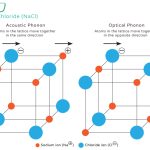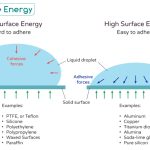Piezoelectric Effect
The piezoelectric effect is a phenomenon where certain substances, called piezoelectric materials, generate an electric charge when they are squeezed, pressed, or otherwise put under mechanical stress. This effect happens because these materials have a specific internal crystal structure that allows electric charges to appear on the crystal’s surfaces when it is squeezed or stretched.
How Does Piezoelectric Effect Work
A crystal is a solid material where atoms or molecules are arranged in a highly organized structure, repeated in patterns based on a basic unit called the unit cell. In metal crystals, the unit cell is symmetrical. However, in piezoelectric crystals, the unit cell lacks this symmetry. Although piezoelectric crystals have an asymmetrical structure, they are usually electrically neutral because the positive and negative charges within the crystal balance each other out.
In a piezoelectric material, the crystal structure is arranged in a way that when it is squeezed or stretched, it causes a slight movement of charges to different parts of the crystal. This disturbance breaks the balance of positive and negative charges, resulting in a charge separation, creating net electrical charges on opposite surfaces of the crystal. Positive and negative charges can be found on the outer faces.
The above phenomenon is called the direct piezoelectric effect. However, there is another phenomenon called the converse piezoelectric effect, which is the reverse of the direct piezoelectric effect. When a voltage is applied to a piezoelectric crystal, the material undergoes a physical deformation, such as stretching, compressing, or bending.
Discovery of Piezoelectricity
The discovery of the piezoelectric effect dates back to 1880, when two French scientists, Pierre and Jacques Curie, made a groundbreaking observation. While studying crystals, they found that certain materials, like quartz, would generate an electrical charge when pressure was applied to them. It was the first time the piezoelectric effect was identified. The Curies noticed that when they squeezed or pressed these crystals, tiny electric charges appeared on their surfaces, which could be measured with special instruments.
This discovery opened the door to understanding how mechanical stress could be converted into electrical energy, and it laid the foundation for the development of many modern devices. Over the years, scientists and engineers have built on the Curies’ work, creating a variety of piezoelectric materials. The Curie brothers’ contribution was vital in shaping our understanding of piezoelectricity and its many applications.
Types and Applications of Piezoelectric Materials
Piezoelectric materials are classified under natural and artificial materials, each with unique applications.
Natural Piezoelectric Materials
- Quartz (SiO2): It is one of the most well-known natural piezoelectric materials. It has a stable and predictable frequency output, making it suitable for clocks, radios, and oscillators. Quartz generates a relatively small amount of electrical charge.
- Topaz: It is a mineral that exhibits piezoelectric properties, though less commonly used. It is less efficient than synthetic materials but still produces a charge when stressed.
- Tourmaline: It is a crystal that can produce a high voltage when mechanically stressed. Tourmaline is often used in high-voltage applications and has good thermal stability.
- Rochelle Salt (Sodium Potassium Tartrate): It is a highly sensitive piezoelectric material, producing a strong response to mechanical pressure. It is very fragile and sensitive to humidity, limiting its practical applications.
- Bone: It exhibits piezoelectricity due to the presence of collagen. This property is thought to play a role in bone remodeling under mechanical stress. It has a very low piezoelectric response compared to other materials.
Artificial (Synthetic) Piezoelectric Materials
- Lead Zirconate Titanate (PZT): It is a highly effective and widely used piezoelectric ceramic with strong piezoelectric properties. It is used in ultrasound transducers, actuators, and other sensors. PZT can produce more voltage and mechanical response than natural materials.
- Barium Titanate (BaTiO3): It is one of the first synthetic ferroelectric materials with strong piezoelectric properties. It is used in capacitors, microphones, and electromechanical transducers. Barium titanate has a lower piezoelectric response than PZT but is non-toxic.
- Lithium Niobate (LiNbO3): It is a synthetic crystal with excellent piezoelectric and optical properties. It is commonly used in optical modulators, frequency doublers, and surface acoustic wave (SAW) devices. It has good thermal and chemical stability.
- Polyvinylidene Fluoride (PVDF): It is a flexible, piezoelectric polymer with lower piezoelectric output compared to ceramics but highly adaptable in shape. It is used in sensors, microphones, and flexible piezoelectric devices.
- Gallium Orthophosphate (GaPO4): Has similar properties to quartz but is more stable at high temperatures, making it suitable for high-temperature applications. It is often used in pressure sensors and accelerometers.
- Zinc Oxide (ZnO): A piezoelectric and semiconductor material used in thin films for nanoscale devices, sensors, and transducers. It has lower piezoelectric output but is useful in microelectromechanical systems (MEMS).
-
References
Article was last reviewed on Friday, November 8, 2024








